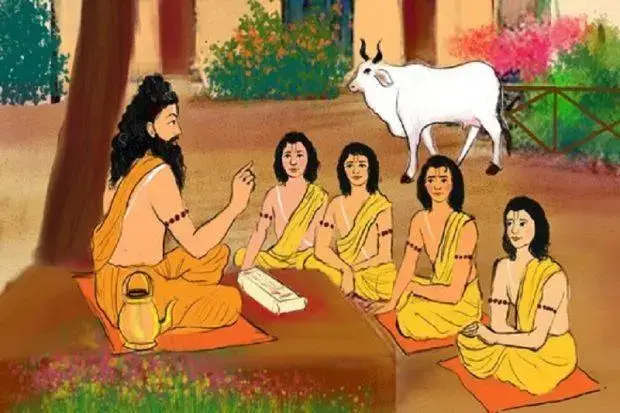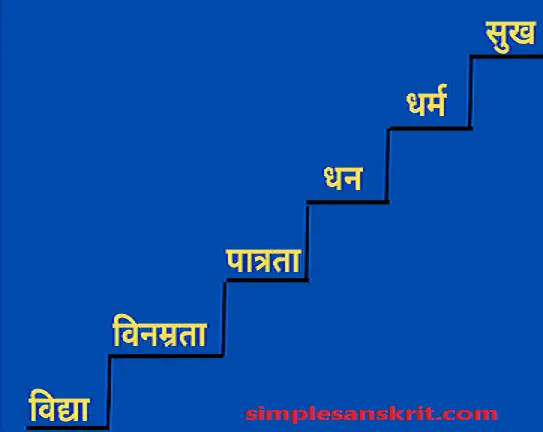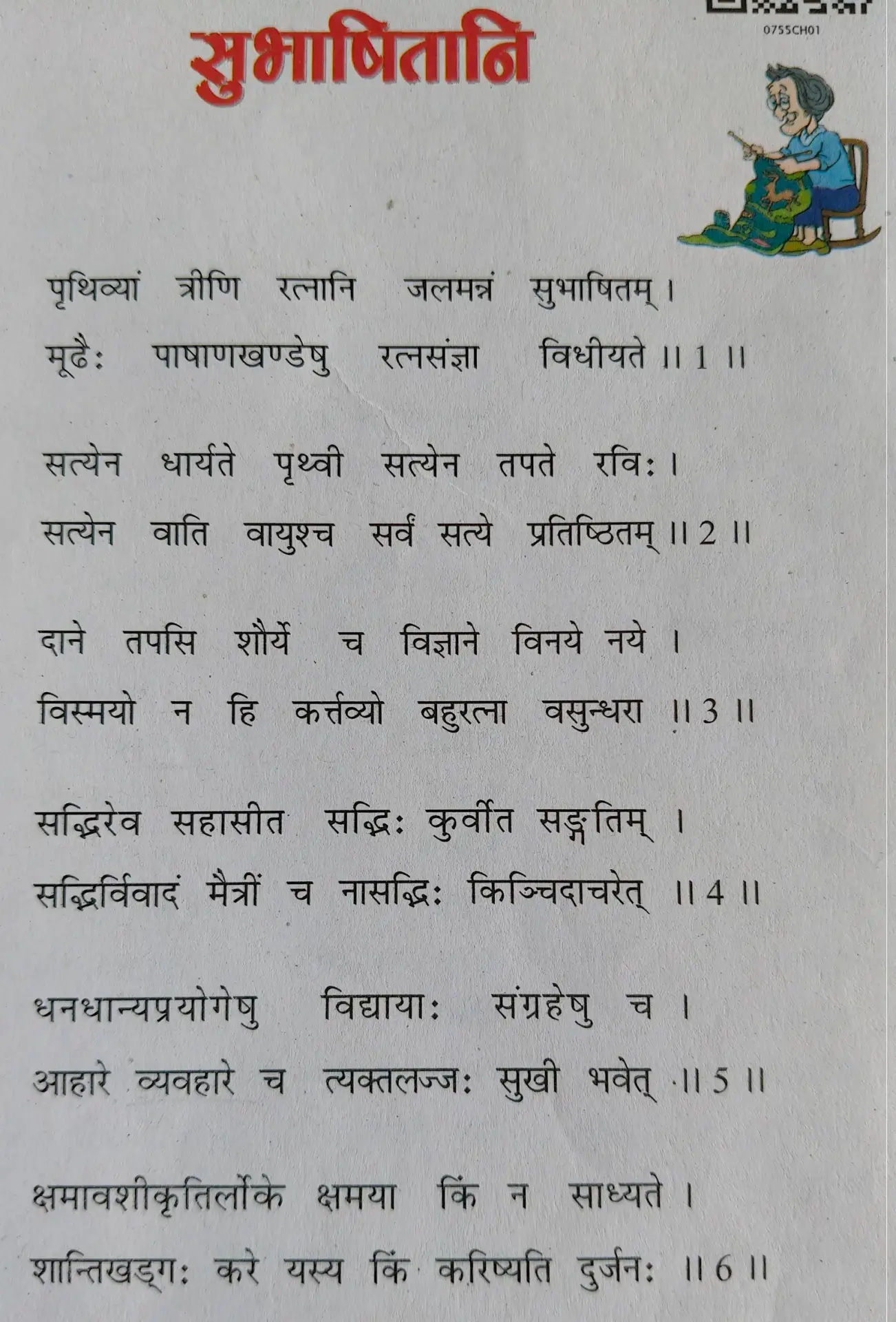हम सुभाषित या सूक्ति शब्द प्रायः सुनते हैं। भारतीय शिक्षा पद्धति में प्रत्येक वर्ग के संस्कृत पाठ्यक्रम में सुभाषितानि को स्थान दिया गया है। आईये, हम सुभाषित से सम्बंधित सभी प्रासंगिक प्रश्न उनके उत्तर के साथ देखते हैं।
We hear the term ‘Subhashitani’ or ‘Sookti’ very often. The Sanskrit syllabus of every class in Indian school education includes these. Let’s go through all the relevant questions regarding Subhashitani along with their answers.
Contents
ToggleSubhashitani/Sookti – a brief intro | सुभाषितानि/सूक्ति - एक संक्षिप्त परिचय
प्रश्न: सुभाषित या सूक्ति का अर्थ क्या है?
उत्तर: सुभाषितम् = सु + भाषितम् = सुन्दर/मधुर वचन
सूक्ति = सु + उक्ति = सुन्दर/मधुर कथन
सुभाषितम्/सूक्ति = सुन्दर वचन = Good Saying
ध्यान दें: सुभाषितम्/सूक्ति शब्द एकवचन में है, जबकि सुभाषितानि या सूक्ति-संग्रह इसका बहुवचन रूप है।
प्रश्न: सुभाषित का इतना अधिक महत्त्व क्यों है?
उत्तर: सुभाषित हमारे जीवन के सभी महत्वपूर्ण पहलुओं – स्वास्थ्य, धन, सम्बन्ध, सुख, शांति एवं आध्यात्मिक ज्ञान के बारे में बहुमूल्य अंतर्दृष्टि प्रदान करते हैं। वे एक मार्गदर्शक या संरक्षक के रूप में कार्य करते हैं और जीवन की अनेक समस्याओं को हल करने में हमारी सहायता करते हैं।
प्रश्न: सुभाषित किन विषयों पर प्रकाश डालते हैं?
उत्तर: सुभाषित अनेकानेक विषयों पर रचे गए हैं। सुभाषित द्वारा मुख्यतः निम्नलिखित विषयों पर विचार किया जाता है:-
- मूल्य जैसे – सत्य, उद्यम, क्षमा, दया, नम्रता, स्वाभिमान, आदि
- कर्तव्य/धर्म/सदाचार
- स्वास्थ्य
- मित्रता
- विद्या
- राष्ट्रीयता
- पर्यावरण
- परिवार, समाज, राष्ट्र, विश्व-बंधुत्व
प्रश्न: सुभाषित के स्रोत क्या हैं?
उत्तर: सुभाषित को निम्नलिखित पुस्तकों/ग्रंथों से संग्रहित किया जाता है:-
- उपनिषद (वेद)
- रामायण
- महाभारत, गीता
- हितोपदेश
- पञ्चतन्त्र
- नीतिशतक
- चाणक्य नीति
- विदुरनीति
- शुक्रनीति
- सूक्तिमञ्जरी
- सुभाषितरत्नभाण्डागारम्
- मनुस्मृतिः
- मृच्छकटिकम्
- भामिनीविलासः, आदि
प्रश्न: सुभाषितों के रचयिता कौन हैं?
उत्तर: भिन्न भिन्न सुभाषितों की रचना विभिन्न कवियों ने की हैं। किसी दिए गए सुभाषित की स्रोतपुस्तक ढूंढकर, आप उसके रचयिता का नाम जान सकते हैं। कृपया स्रोत पुस्तकों और उनके लेखकों की सूची यहां देखें।
पुस्तक | लेखक |
उपनिषद्/वेद | अपौरुषेय |
रामायण | आदिकवि वाल्मीकि |
महाभारत, गीता | महर्षि वेदव्यास |
हितोपदेश | नारायण पंडित |
पञ्चतन्त्र | विष्णु शर्मा |
नीतिशतक | भर्तृहरि |
चाणक्य नीति | चाणक्य |
विदुरनीति | महर्षि वेदव्यास |
शुक्रनीति | शुक्राचार्य |
सूक्तिमञ्जरी | बलदेव उपाध्याय द्वारा संकलित |
सुभाषितरत्नभाण्डागारम् | अनेक कवियों की रचनायें |
मनुस्मृतिः | मनु |
मृच्छकटिकम् | महाकवि शूद्रक |
भामिनीविलासः | पंडितराज जगन्नाथ |
प्रश्न: सुभाषित पढ़ने से क्या लाभ हैं?
उत्तर: सुभाषितों की शिक्षाओं को पढ़ने और आत्मसात करने से निम्नलिखित लाभ मिलते हैं:-
- सुख-शान्ति
- मार्गदर्शन
- समाधान
- विवेक
- सर्वांगीण विकास
- संस्कृत भाषा और भारतीय संस्कृति से परिचय
Question: What is the meaning of Subhashitam or Sookti?
Answer: The Sanskrit word ‘Subhashitam’ means good saying. ‘Su’ means good or beautiful and ‘Bhaashitam’ means saying.
‘Subhashitam’ or ‘Sookti’ is a singular word while ‘Subhashitani’ or ‘Sookti sangrah’ is a plural term for a collection of good sayings.
Question: Why are Subhashitani so important?
Answer: Subhashitani offer wise insights about all important aspects of our lives – health, wealth, relations, happiness, peace and spiritual growth. They act as a guide or mentor and help us solve many life problems.
Question: What topics are covered in Subhashitani?
Answer: The list of topics that the Subhashitani cover is too vast. Primarily, the following topics are addressed by Subhashitani:-
- Values such as – Truth, Effort, Forgiveness, Kindness, Humility, Self-esteem and so on.
- Duty/Righteousness/Good Conduct
- Health
- Friendship
- Learning
- Nationality
- Environment
- Family, Society, Nation, World-family
Question: What are the sources of Subhashitani?
Answer: Subhashitani are chosen from the following books/scriptures:-
- Upanishads/Vedas
- Ramayana
- Mahabharata, Gita
- Hitopadesha
- Panchatantra
- Neetishataka
- Chanakya Neeti
- Vidura Neeti
- Shukra Neeti
- Sookti Manjari
- Subhashita Ratna Bhaandaagaaram
- Manusmriti
- Mrichchhakatikam
- Bhaamini Vilaas, etc.
Question: Who is the author of Subhashitani?
Answer: Different subhashitani have been composed by different authors. By finding the sourcebook of a given subhashitam, you can find out the author’s name. Please find here the list of source books and their authors.
Book | Author |
Upanishads/Vedas | None |
Ramayana | Aadikavi Valmiki |
Mahabharata, Gita | Maharshi Veda Vyasa |
Hitopadesha | Narayana Pandit |
Panchatantra | Vishnu Sharma |
Neetishataka | Bhartrihari |
Chanakya Neeti | Chanakya |
Vidura Neeti | Maharshi Veda Vyasa |
Shukra Neeti | Shukracharya |
Sookti Manjari | Compiled by Baldev Upadhyaya |
Subhashita Ratna Bhaandaagaaram | Many poets |
Manusmriti | Manu |
Mrichchhakatikam | Mahakavi Shudrak |
Bhamini vilaas | Panditraj Jagannath |
Question: What are the benefits of studying Subhashitani?
Answer: One gets the following benefits by reading and imbibing the teachings of Subhashitani:-
- Peace & joy
- Guidance
- Solutions
- Wisdom
- Holistic growth
- Familiarity with Sanskrit and Indian culture.
A step-wise method for interpretation of a shlok/subhashitam | श्लोक/सुभाषित समझने की एक चरणबद्ध सरल विधि
प्रश्न: किसी भी सुभाषित या श्लोक का पूर्ण अर्थ समझने की चरणबद्ध विधि क्या है?
उत्तर: किसी भी सुभाषित या श्लोक की व्याख्या के लिए निम्नलिखित चरणों का पालन करना चाहिए: –
- पाठ
- पदच्छेद
- अन्वय
- शब्दार्थ
- भावार्थ / तात्पर्य
उपर्युक्त विधि का प्रयोग करते हुए हम सभी सुभाषितों के शब्दार्थ एवं भावार्थ समझेंगे।
Question: What is the step-wise method of making full sense of any subhashitam or shloka?
Answer: One must follow the under-mentioned steps for interpreting any subhashitam or shloka:-
- Recitation
- Words separation
- Words rearrangement in prose order
- Understanding the literal meaning
- Understanding the essence.
We will understand the meaning and essence of all the subhashitani/shlokas applying this method.


